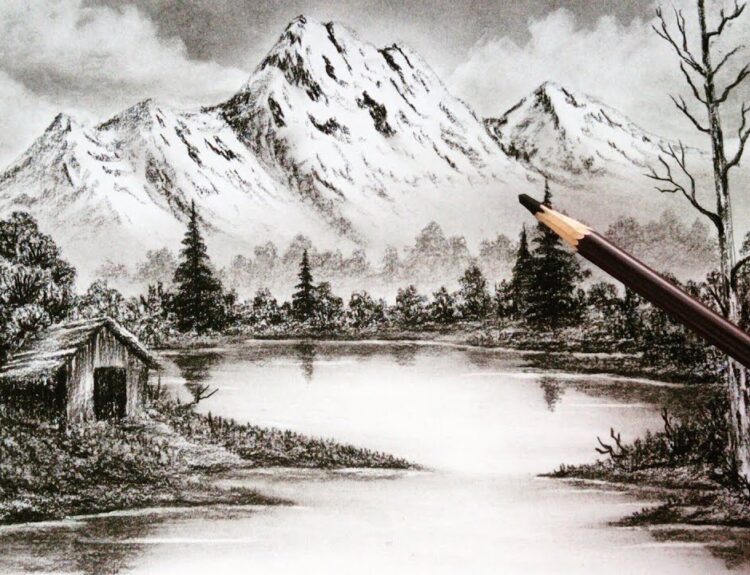Art has been a cornerstone of human expression for millennia. Among the diverse forms and movements that have evolved over time, Traditional Fine Art holds a distinguished place for its craftsmanship, aesthetic value, and enduring influence. While contemporary art often explores the boundaries of innovation and abstraction, Traditional Fine Art roots itself in the techniques, disciplines, and philosophies that shaped art history from antiquity through the 19th century.
This article explores the origins, evolution, significance, and modern-day relevance of Traditional Fine Art, offering a comprehensive view for enthusiasts, collectors, students, and practitioners alike.
What is Traditional Fine Art?
Traditional Fine Art refers to artistic practices that prioritize established techniques and materials, often focusing on realistic representation, classical beauty, and manual skill. These artworks are usually created using mediums like oil paint, watercolor, charcoal, marble, and bronze. The primary disciplines under this umbrella include:
- Painting
- Drawing
- Sculpture
- Printmaking
These forms are typically taught in classical art academies and adhere to centuries-old techniques that have been refined and passed down through generations.
A Brief History of Traditional Fine Art
The history of Traditional Fine Art spans many cultures and epochs. From the cave paintings of Lascaux to the grandeur of the Renaissance, it reflects the evolution of human intellect, society, and spirituality.
Ancient Civilizations
In ancient Egypt, Greece, China, and India, art was deeply intertwined with religion and governance. Egyptian tombs were adorned with vivid frescoes meant to guide the dead into the afterlife, while Greek artists pioneered realism and idealism in sculpture. These works were not only decorative but deeply symbolic and functional.

The Renaissance
The Renaissance period (14th–17th century) is often seen as the golden age of Traditional Fine Art. Artists like Leonardo da Vinci, Michelangelo, Raphael, and Titian developed techniques such as linear perspective, chiaroscuro, and anatomical accuracy. This era marked a shift from purely religious themes to humanism, celebrating the beauty and complexity of the natural world and the human form.
Baroque to Romanticism
From the 17th to the 19th century, Traditional Fine Art flourished under different movements. The Baroque era emphasized drama and grandeur; the Rococo period was light and decorative; Neoclassicism revived ancient Greek and Roman ideals; Romanticism emphasized emotion and individualism. Each period enriched the vocabulary and complexity of traditional art.
Academic Art
By the 19th century, institutions such as the École des Beaux-Arts in Paris formalized Traditional Fine Art education. Artists underwent rigorous training, learning anatomy, composition, perspective, and the use of classical subjects. These academic standards defined what was considered “high art” for decades.
Core Characteristics of Traditional Fine Art
Understanding Traditional Fine Art means recognizing its distinct qualities that separate it from other artistic expressions.
1. Emphasis on Skill and Technique
One of the defining features of Traditional Fine Art is its reliance on technical mastery. Whether it’s rendering the human form with anatomical accuracy or sculpting marble to resemble flowing fabric, traditional artists spend years honing their craft.
2. Representational Imagery
Unlike abstract or conceptual art, Traditional Fine Art typically represents reality. Landscapes, portraits, and still lifes are depicted with fidelity to what the eye sees, often enhanced by artistic interpretation.
3. Use of Time-Tested Mediums
Oil paint, charcoal, marble, bronze, and tempera are common in Traditional Fine Art. These materials not only offer a rich aesthetic but also ensure the longevity of the artwork.
4. Classical Composition and Balance
Traditional artists often adhere to compositional rules derived from classical antiquity, such as the Golden Ratio. Harmony, proportion, and balance are key considerations in creating aesthetically pleasing works.
Techniques and Tools in Traditional Fine Art
The creation of Traditional Fine Art is rooted in established techniques and tools that have stood the test of time.
Drawing
Drawing is the foundation of most traditional works. Artists use graphite, charcoal, or ink to sketch compositions, study forms, and plan larger pieces.
Painting
Oil painting, with its rich color and slow drying time, allows for subtle blending and layering. Glazing, impasto, and scumbling are techniques developed over centuries to achieve depth and realism.
Sculpture
Sculptors in Traditional Fine Art often work in clay, marble, or bronze. The lost-wax casting process and stone carving require both precision and physical labor.
Printmaking
Techniques like etching, engraving, and lithography allowed traditional artists to reproduce images and disseminate their work to wider audiences without compromising quality.
The Role of Academies and Apprenticeships
Historically, the journey to becoming a traditional fine artist involved rigorous academic training or apprenticeships. Art academies provided structured curricula, including life drawing from nude models, anatomy studies, and art history. Apprenticeships allowed students to work under master artists, learning by observation and practice.
Even today, many institutions around the world, such as the Florence Academy of Art and the Grand Central Atelier in New York, continue to uphold the values of Traditional Fine Art, ensuring its techniques and principles endure.
Cultural and Social Impact of Traditional Fine Art
Traditional Fine Art has always mirrored and shaped society. Whether used to glorify rulers, depict historical events, or express religious devotion, it has played a central role in both private and public life.
Religious and Mythological Themes
For centuries, art served as a vehicle for spiritual expression. Churches, temples, and palaces were adorned with murals, statues, and altarpieces that conveyed religious stories and values to largely illiterate populations.
Political Propaganda
Rulers commissioned grand portraits and monumental works to legitimize power, project authority, and celebrate military victories. These pieces remain invaluable historical records.
Education and Documentation
Before photography, Traditional Fine Art was the primary means of documenting people, places, and events. Portraits, architectural renderings, and battle scenes provide insights into the aesthetics, attire, and culture of the time.
Collecting and Preserving Traditional Fine Art
Owning a piece of Traditional Fine Art is often seen as possessing a fragment of history. Museums, galleries, and private collectors invest in conservation to protect these works from environmental damage, aging, and neglect.
Famous Institutions
Museums like the Louvre, the Metropolitan Museum of Art, and the Uffizi Gallery are home to some of the world’s most iconic traditional masterpieces. These institutions not only display the work but also contribute to academic research and public education.
The Art Market
The market for Traditional Fine Art remains strong, with Old Masters and academic pieces commanding high prices at auctions. Provenance, condition, and historical importance significantly influence value.
Challenges Facing Traditional Fine Art Today
While Traditional Fine Art continues to inspire, it faces several modern-day challenges:
1. Diminishing Academic Support
Many contemporary art schools have shifted focus to conceptual and experimental art, often at the expense of traditional training. This has led to a skills gap among emerging artists.
2. Misconceptions and Stereotypes
Some critics dismiss Traditional Fine Art as outdated or lacking innovation. However, many artists are pushing the boundaries within traditional frameworks, blending classical technique with modern themes.
3. Preservation Issues
Older artworks are susceptible to damage from light, humidity, and improper handling. Conservation requires specialized knowledge and resources, making it an ongoing challenge for collectors and institutions.
Revival and Resurgence
Despite these challenges, there has been a notable revival of interest in Traditional Fine Art over the past two decades. Movements like the Atelier Renaissance have sparked renewed appreciation for realism, craftsmanship, and the human form.
Social Media and Online Learning
Platforms like Instagram and YouTube have enabled traditional artists to share their work with global audiences, gain patrons, and even offer online classes. This democratization has revitalized interest in old-school techniques.
Cross-Pollination with Contemporary Art
Many contemporary artists are reintroducing classical elements into their work. This fusion enriches both traditions and attracts a diverse audience.
Notable Modern Practitioners of Traditional Fine Art
Today, artists like Jacob Collins, Juliette Aristides, and Steven Assael are leading figures in the contemporary classical realism movement. Their work exemplifies how Traditional Fine Art can evolve without losing its essence.
These artists often teach at ateliers or publish instructional books, further contributing to the movement’s growth and sustainability.
Why Traditional Fine Art Still Matters
In a fast-paced digital world, Traditional Fine Art serves as a reminder of the value of patience, discipline, and human touch. It represents a lineage of knowledge, technique, and cultural identity that connects us to our ancestors and heritage.
It also provides a unique emotional resonance. Whether it’s the quiet dignity of a Vermeer portrait or the dynamic drama of a Caravaggio scene, traditional artworks speak to our shared humanity in ways that transcend time and geography.
Conclusion
Traditional Fine Art is more than just a relic of the past; it is a living, evolving tradition that continues to inspire and educate. Rooted in centuries of human endeavor, it embodies the best of what art can offer—technical brilliance, aesthetic beauty, and profound meaning.
While modern art movements offer innovation and variety, the timeless principles of Traditional Fine Art remind us of the enduring power of skill, discipline, and storytelling. Whether you’re an artist, collector, student, or simply an admirer, engaging with traditional art is a journey into the soul of human history










